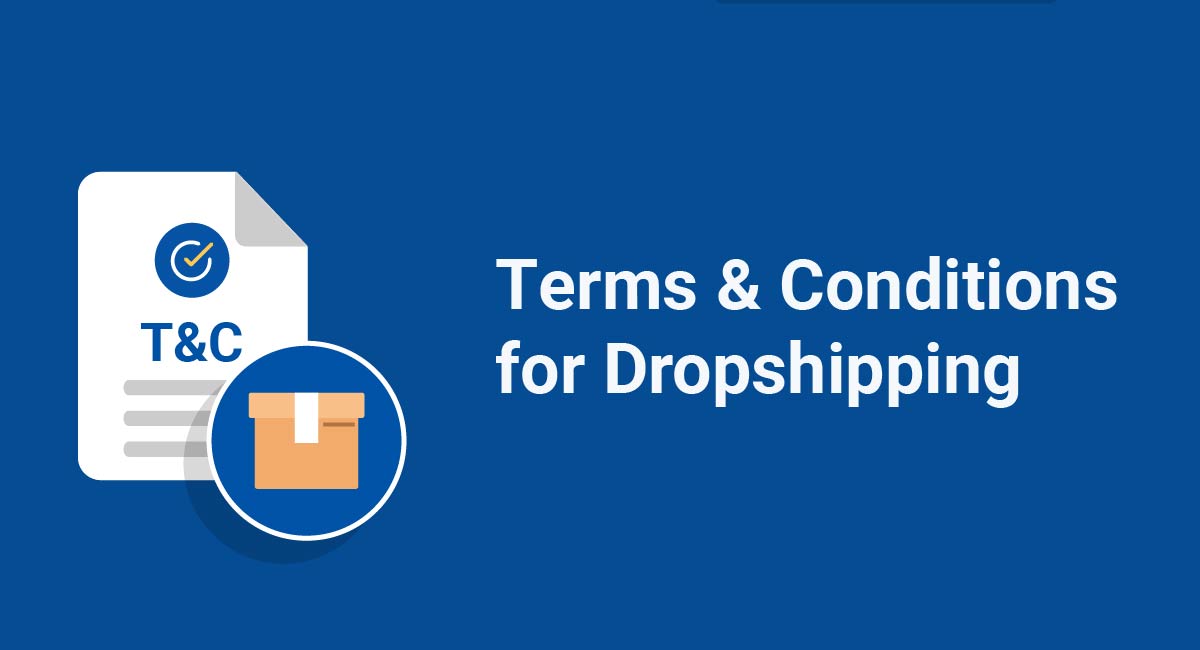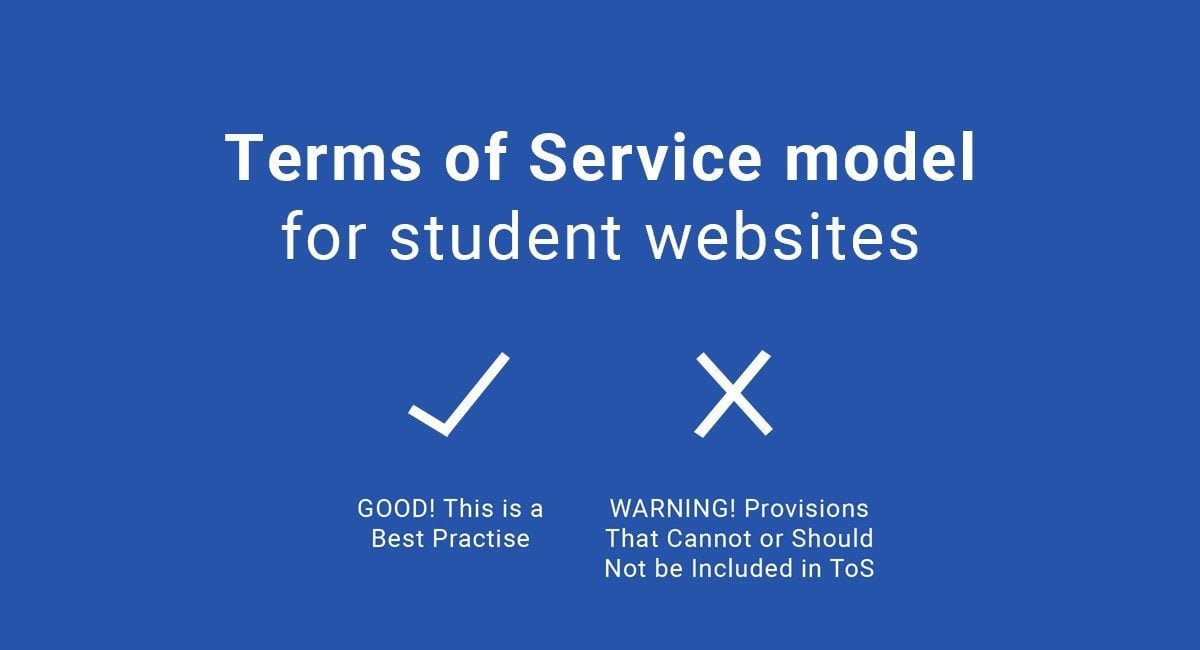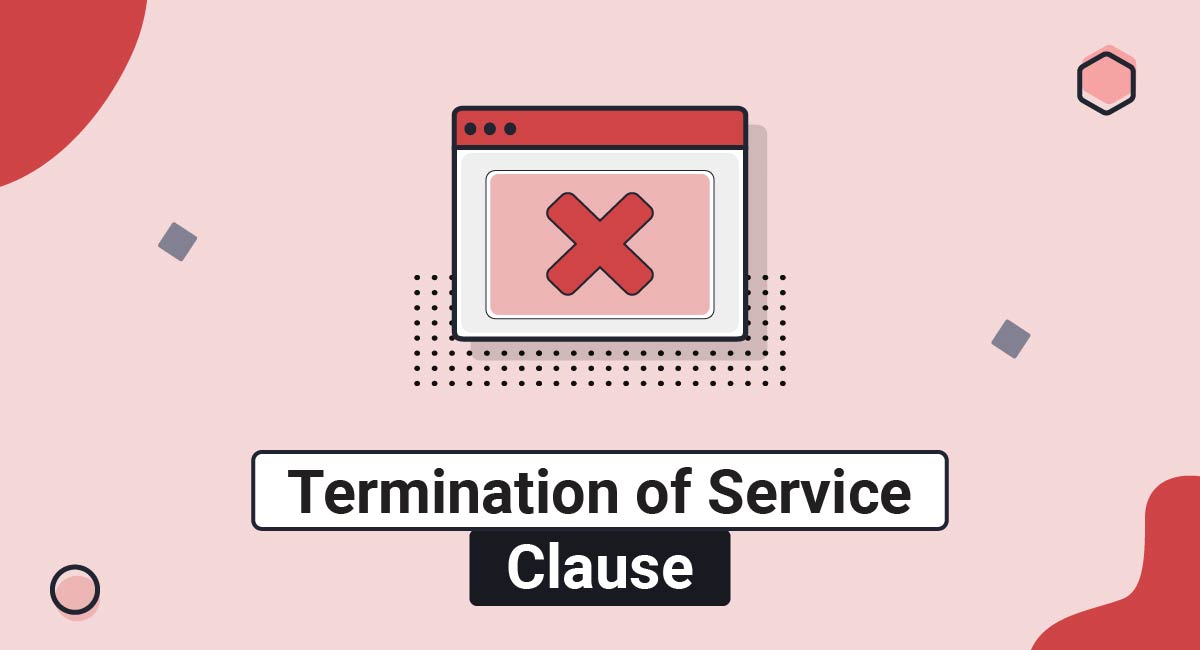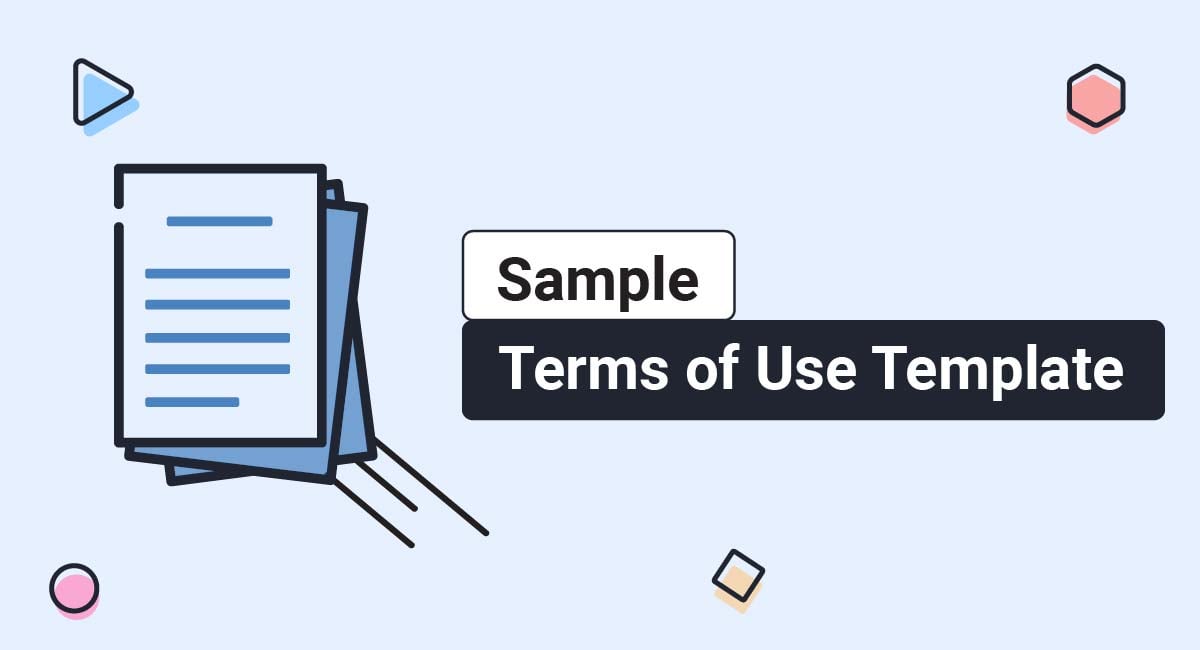If you're the owner of a dropshipping store, your website should have a Terms and Conditions agreement (T&C). It's not a legal requirement, but it is very beneficial for you to have.
For instance, a Terms and Conditions agreement can help protect you legally, limit your liability should something happen during the dropshipping process, set out rules that your customers need to follow, and what remedies are available if legal conflicts occur.
In the article below, we'll discuss why a Terms and Conditions agreement is something your dropshipping store should have, what you should put in it, and where you should display it.
Our Terms and Conditions Generator makes it easy to create a Terms and Conditions agreement for your business. Just follow these steps:
-
At Step 1, select the Website option or the App option or both.
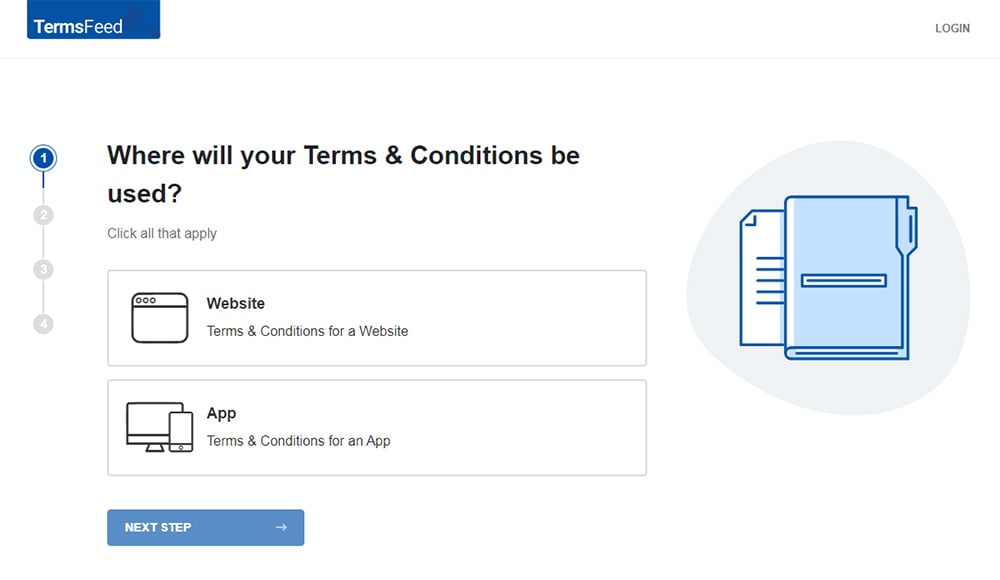
-
Answer some questions about your website or app.
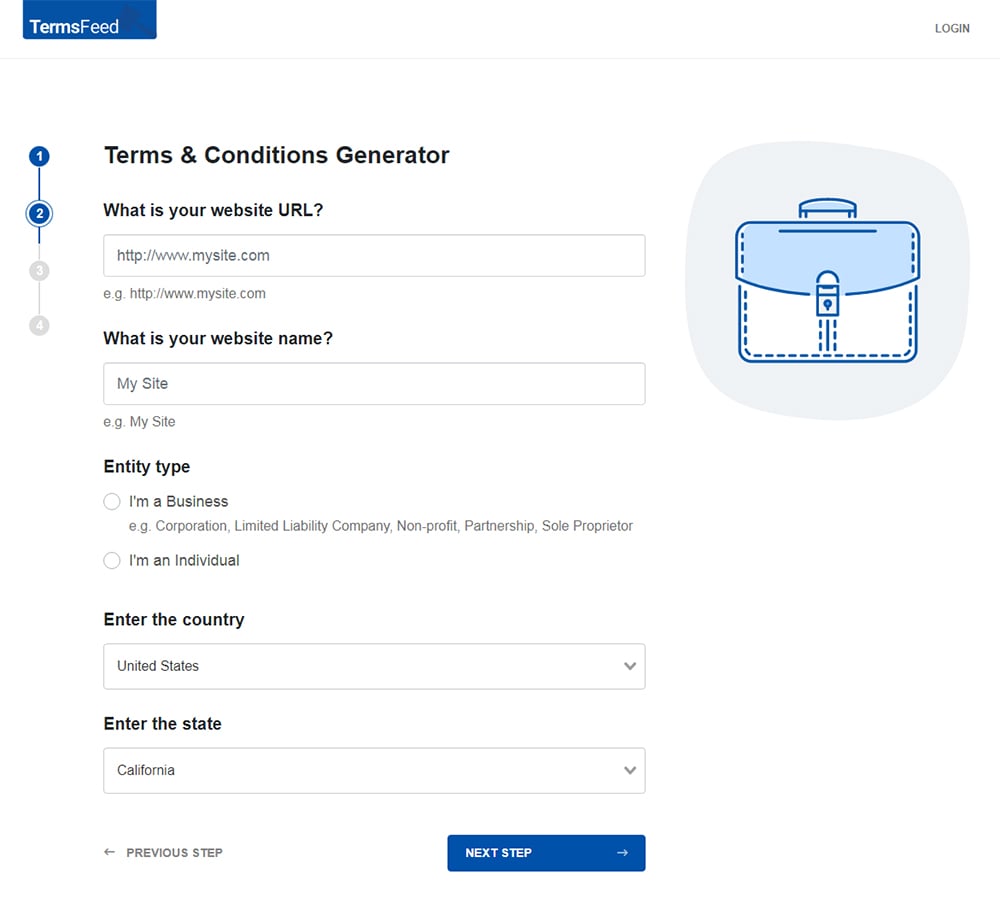
-
Answer some questions about your business.
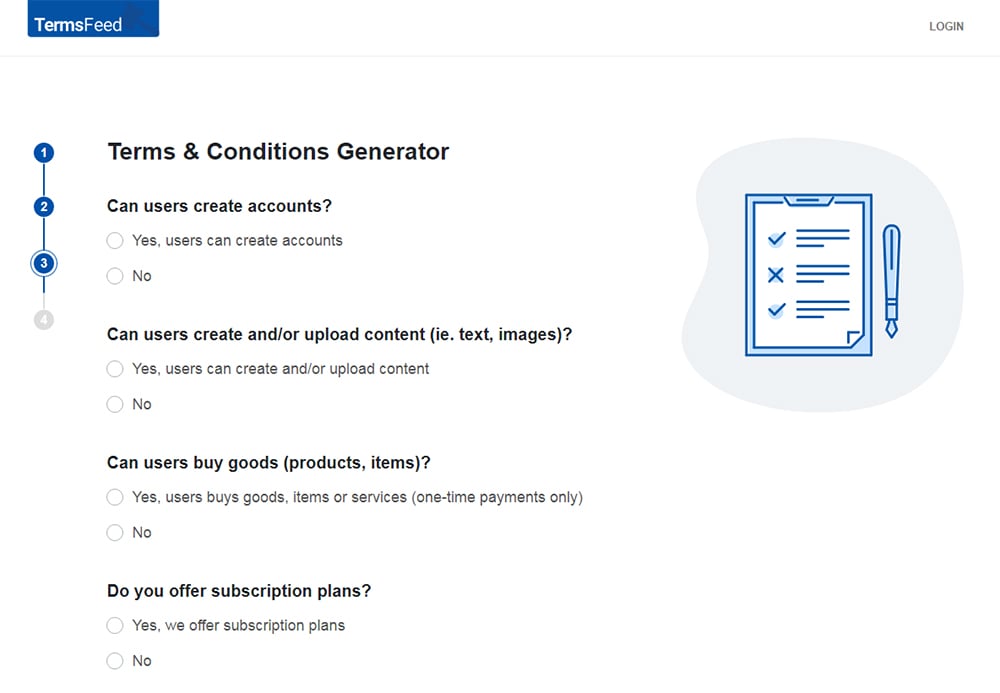
-
Enter the email address where you'd like the T&C delivered and click "Generate."
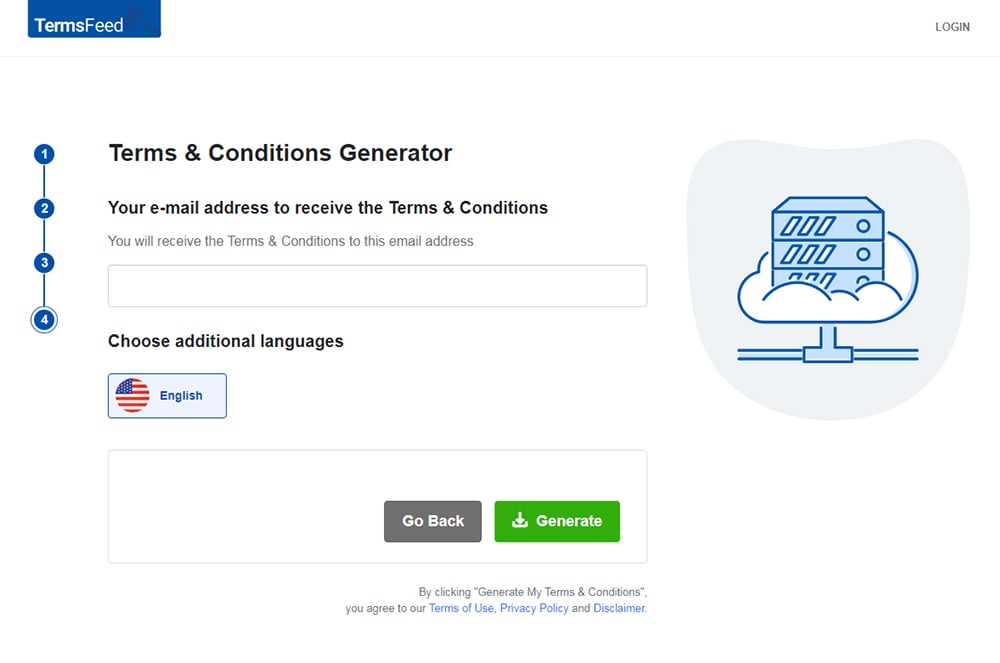
You'll be able to instantly access and download the Terms & Conditions agreement.
- 1. What's a Terms and Conditions Agreement?
- 2. Why Your Dropshipping Store Needs a Terms and Conditions Agreement
- 3. What Information to Put in Your Dropshipping Terms and Conditions Agreement
- 3.1. The Introduction Clause
- 3.2. The House Rules
- 3.3. Prohibited Uses and Actions
- 3.4. Protection of Intellectual Property
- 3.5. Payment Terms
- 3.6. Limitation of Liability
- 3.7. Cancellations and Refunds
- 3.8. Jurisdiction and Conflict Resolution
- 3.9. Contact Information
- 4. Where to Display Your Dropshipping Terms and Conditions Agreement
- 4.1. Website Footers
- 4.2. Create Account Forms
- 4.3. Checkout Pages
- 5. Summary
What's a Terms and Conditions Agreement?
A Terms and Conditions agreement is a contractual agreement that outlines the precise legal relationship between the dropshipper and customers.
Terms and Conditions agreements are also known as a Terms of Service agreement or a Terms of Use agreement.
Here's an example of a Terms agreement table of contents, so you can see what types of clauses are included:
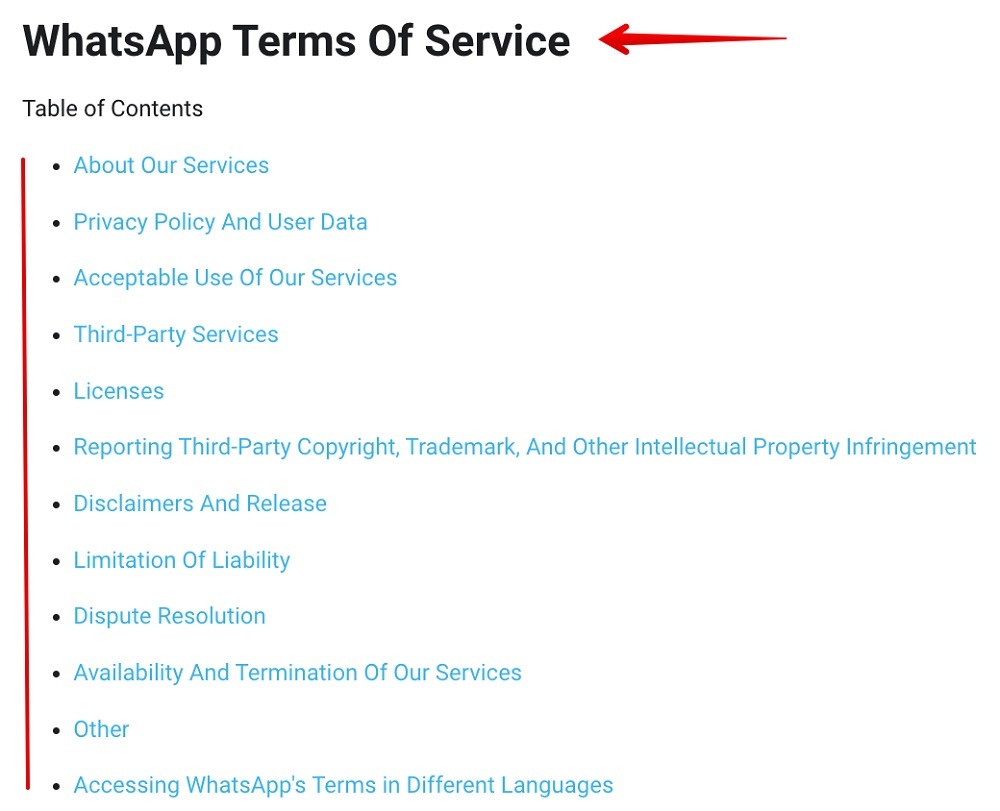
With a Terms and Conditions agreement in place, you create clear expectations for all parties. Moreover, you make it easier to take legal action if a customer attempts to take advantage and abuses your business.
A dropshipping Terms and Conditions agreement will ultimately work to convey the following information:
- Privacy statements that link to a comprehensive Privacy Policy
- How customers may use the dropshipper's website
- The responsibilities and rights of all parties
- What the dropshipper is and is not liable for
- Information on whom customers can contact if problems arise over the sale
Why Your Dropshipping Store Needs a Terms and Conditions Agreement

A Terms and Conditions agreement is written to protect you and your customers. You're able to be incredibly specific about what you can and cannot be held liable for and what actions you're able to take when wronged.
For example, you may describe in detail your policies regarding order cancellations and refunds.
Here's an example of how a dropshipping store cant note in its T&C that cancellations are only accepted under certain conditions:

You could also specify:
- How international customers may access and use your website
- That international customers are responsible for VAT and customs fees
- That your intellectual property is protected
- That financial compensation to customers is limited under specific conditions (such as when there are shipping delays)
- That you may delete customer accounts without explanation or warning if that customer violates your conditions
- That when legal issues arise, you intend to follow a specific dispute process (which is then outlined in your T&C)
Recall that you're not legally bound to have a Terms and Conditions agreement. However, as a dropshipper, you should understand that a lot can go wrong between the moment an order is received and when the product is delivered to the customer.
Your Terms and Conditions agreement is a shield against the moments when things go badly.
What Information to Put in Your Dropshipping Terms and Conditions Agreement

Common sections to place within a Terms and Conditions agreement for your dropshipping website include:
- An introduction
- The Rules of the House
- Prohibited Uses and Actions
- Protection of Intellectual Property
- Payments
- Limitation of Liability
- Cancellations and Refunds
- Jurisdiction and Conflict Resolution
- Contact Information
Even though we listed some common clauses that many dropshipping websites include in their Terms and Conditions agreement, no fast and hard rule says you have to include all of them. Every T&C should be tailored to the needs of the business it covers.
With that said, we listed the clauses above for a reason. We'll go over each of these below.
Keep in mind when drafting your agreement that it's a best practice to ensure that all language used in the T&C is kept clear, simple, and easy to read. You should avoid legal jargon as much as possible.
The Introduction Clause
The purpose of the introduction clause in your Terms and Conditions agreement is to let everyone know exactly to whom the agreement applies. The clause should outline:
- What the agreement is
- Who the agreement is between
- When the agreement applies
The dropshipping site, Indestructible Shoes, does a great job of stating to whom its Terms of Service applies in its introductory clause, as seen here:

The House Rules
Some dropshippers combine several things regarding the overall rules of website use into one section. However, others break it up into a couple of subsections as both Indestructible Shoes and Men's Luxury Boutique do.
For example, both stores break their house rules into online store terms and general conditions. These sections outline rules concerning things such as giving implicit permission for the site to allow a user's children who are minors to use the site and agree that the user will not transmit viruses, worms, or any other malicious code.
Here's how the Men's Luxury Boutique lays it out:
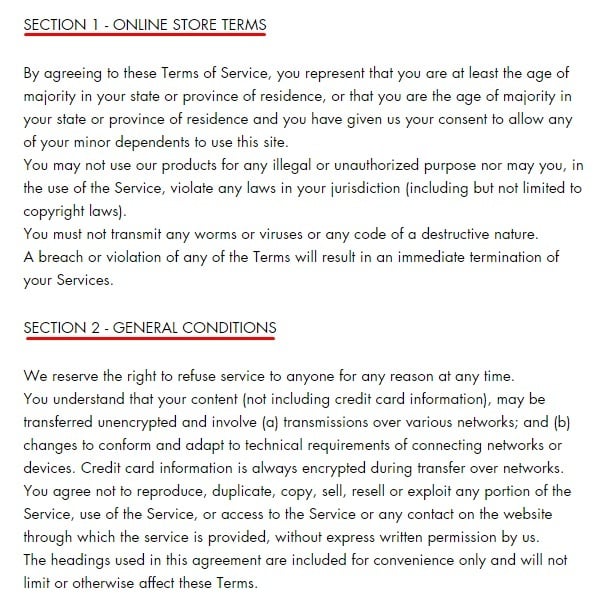
Prohibited Uses and Actions
You should clarify what kinds of content and behavior you won't allow when it comes to your services.
For instance, here are some common things that businesses will disallow in a Terms agreement:
- Using the site for any unlawful purpose
- Soliciting others to participate or perform in any unlawful acts
- To violate any local, state, provincial, federal, or international, fordinances
- To infringe violate or infringe upon our intellectual property rights or the intellectual property rights of others
- To discriminate, intimidate, harass, abuse, insult, harm, defame, slander, or disparage based on gender, sexual orientation, religion, disability, ethnicity, race, age, or national origin
- To submit false or misleading information
Here's an example of a clause that lists prohibited activities:
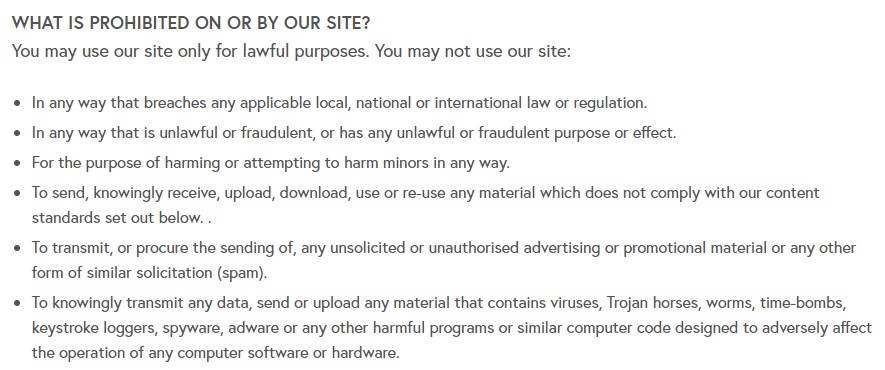
By including these types of demands in the Terms and Conditions agreement, websites make it easy to suspend or delete users that break the terms of service they've explicitly laid out. Indeed, Motrendy plainly declares that it reserves the right to terminate a site visitor's use of its service if that user violates any of the terms listed above.
Protection of Intellectual Property
Commercial branding materials, such as trademarks, slogans, or combinations thereof, are your intellectual property and need to be protected. You can do that by putting a clause in your T&C that details what users can and cannot do with it.
Here's an example:

Payment Terms
You need to lay out in no uncertain terms what is expected when it comes to taking payment. For example, let customers know that they have a responsibility to provide accurate payment information when making a purchase.
Here's an example of this:
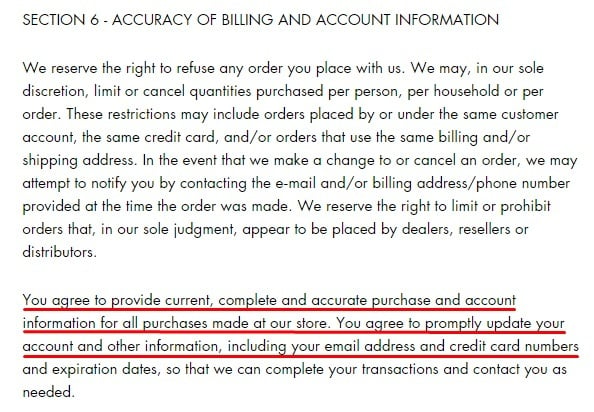
Limitation of Liability
There are many things you can't guarantee won't happen when someone uses your website, and you don't want to be sued to kingdom come if one of those things takes place.
For example, you don't want to be liable if:
- Errors occur in your system
- If hackers breach website security through a third-party advertisement
- If an order goes unfulfilled
- If you describe an item incorrectly
- Someone uploads offensive content to your website
Therefore, it's a great idea to ensure that you're not, in fact, liable. Warmly goes so far as to practically say that the company isn't liable for anything at all, ever...except in some geographic locations.
As the company says in its liability clause:
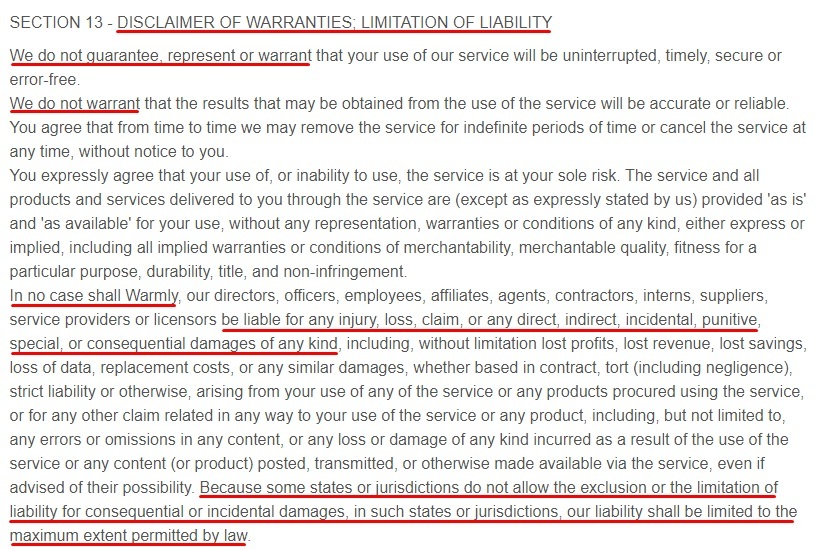
Cancellations and Refunds
Not every dropshipper has the same policy when it comes to refunds and cancellations. It's a good idea, then, for you to mention this subject in your Terms and Conditions agreement and point to a specific Return and Refund Policy to avoid any confusion on the matter and to avoid future conflict with customers.
For example, a Terms agreement can include something like the following:

Note that the company's Terms of Service doesn't detail its return policy, but it does mention such a policy. It tells customers that information on returns is located in a separate, specific agreement on that subject.
Jurisdiction and Conflict Resolution
Should conflicts arise, your customers need to know the legal process you follow to resolve them. You should also make clear under which state (or country's) laws dispute resolution will take place.
The Jurisdiction and Conflict Resolution clause (also sometimes called the Governing Law clause) is the place to put this information.
Here's how this can be done:

Contact Information
A clause that contains information on how your customers can contact you with any questions or concerns they might have is something that every Terms and Conditions agreement should include.
It's a best practice to give customers several ways in which to contact you. For instance, these could include:
- An online form
- Company email address
- Company phone number
- Company mailing address
Here's an example:

Remember that providing multiple ways to contact your company helps build overall trust and professionalism.
Where to Display Your Dropshipping Terms and Conditions Agreement

It's important to recall that you should never bury your Terms and Conditions agreement in a place on your website where visitors will never find it. It should be displayed in an easily viewable and accessible location.
There are a few different places that are recommended.
Website Footers
The footer of your website might seem like a conspicuous location to place your Terms and Conditions agreement, but you might be amazed at how many dropshippers neglect to put it there. However, the footer is an excellent location since it meets the criteria suggested above.
The footer is easily viewable and accessible to all website visitors, and it's usually a part of every page on your website.
Here's an example:

Note that the mobile app equivalent of a website footer would be somewhere within an app's menu, such as within a Settings or More Info menu. You should add a link to your Terms and Conditions agreement in such a place within your dropshipping store's mobile app, like so:
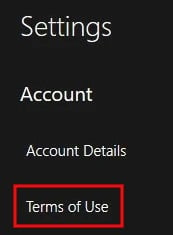
Create Account Forms
When people sign up for accounts with your dropshipping store, you can (and should) provide a link to your Terms and Conditions agreement in the form itself, along with a statement that lets users know they will need to agree to the terms.
This placement lets people view your terms before creating the account, which ensures that they're ok with actually agreeing with what you're presenting.
Here's an example from the Deepstash mobile app:
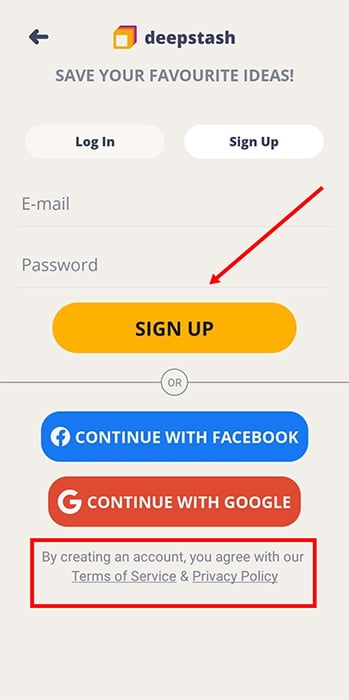
Checkout Pages
Another common place to display a Terms and Conditions agreement link is somewhere within the checkout pages of your dropshipping store. Customers must work through these pages to complete an order, so it's a good time to remind them that your Terms and Conditions agreement applies to the transaction.
Here's an example from H&M:

You can request users agree to your Terms as well before placing a purchase, such as is seen here:
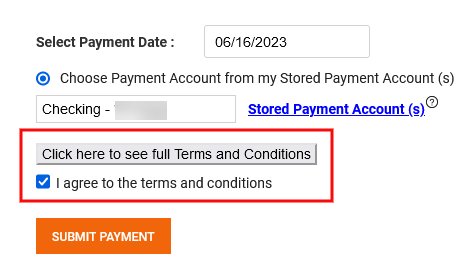
Summary
If you own a dropshipping store, you don't have to legally include a Terms and Conditions agreement on your website, but you should write and display one anyway. Remember that a proper Terms and Conditions agreement protects you from liability issues, while also helping to keep your customers informed about important aspects of your business.
You should always include clauses that govern:
- Prohibited user activity
- Account termination
- Availability of services
- Product warranties
- Payments
- Limitations on liability
Moreover, you should note that your Terms and Conditions agreement is subject to change at any time. The agreement should be explicit, written in plain language, and formatted so that your website's visitors can read it easily.
Finally, place your Terms and Conditions agreement in prominent, conspicuous locations like your website's footer and on account sign-up forms. If you feel there are other relevant locations, such as on login or checkout pages, place a link to your T&C there, as well.

Comprehensive compliance starts with a Privacy Policy.
Comply with the law with our agreements, policies, and consent banners. Everything is included.
